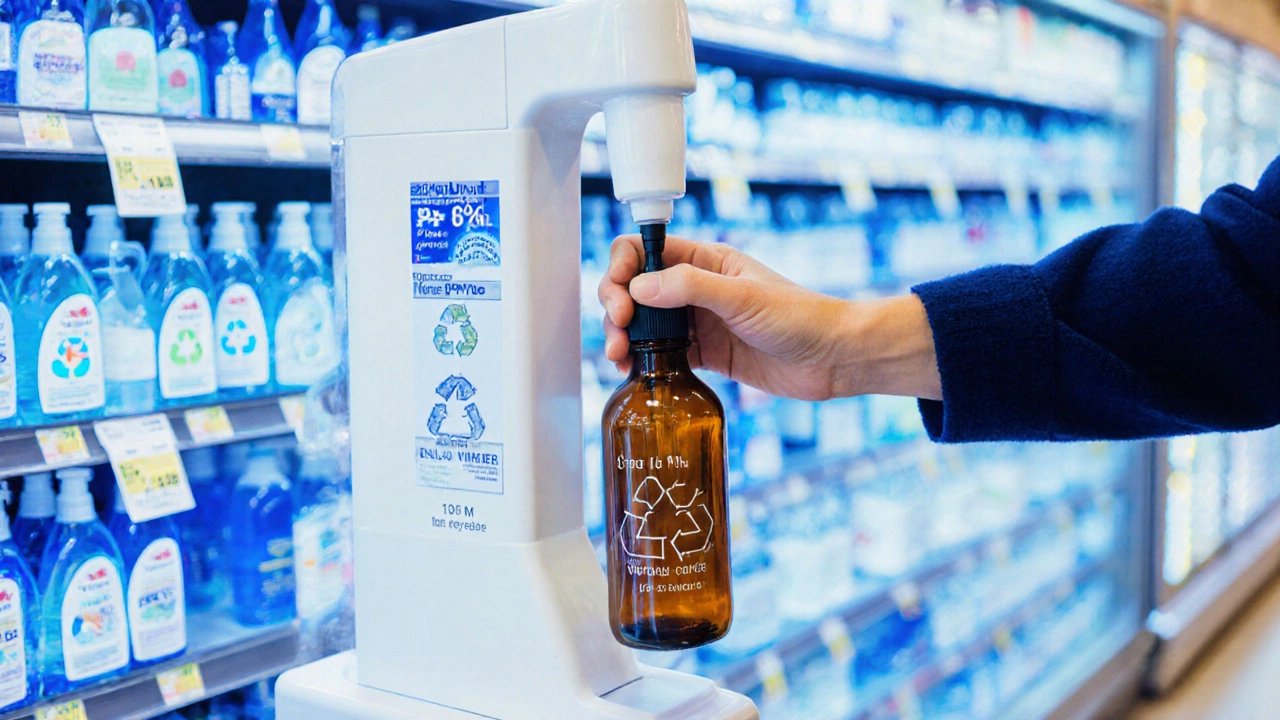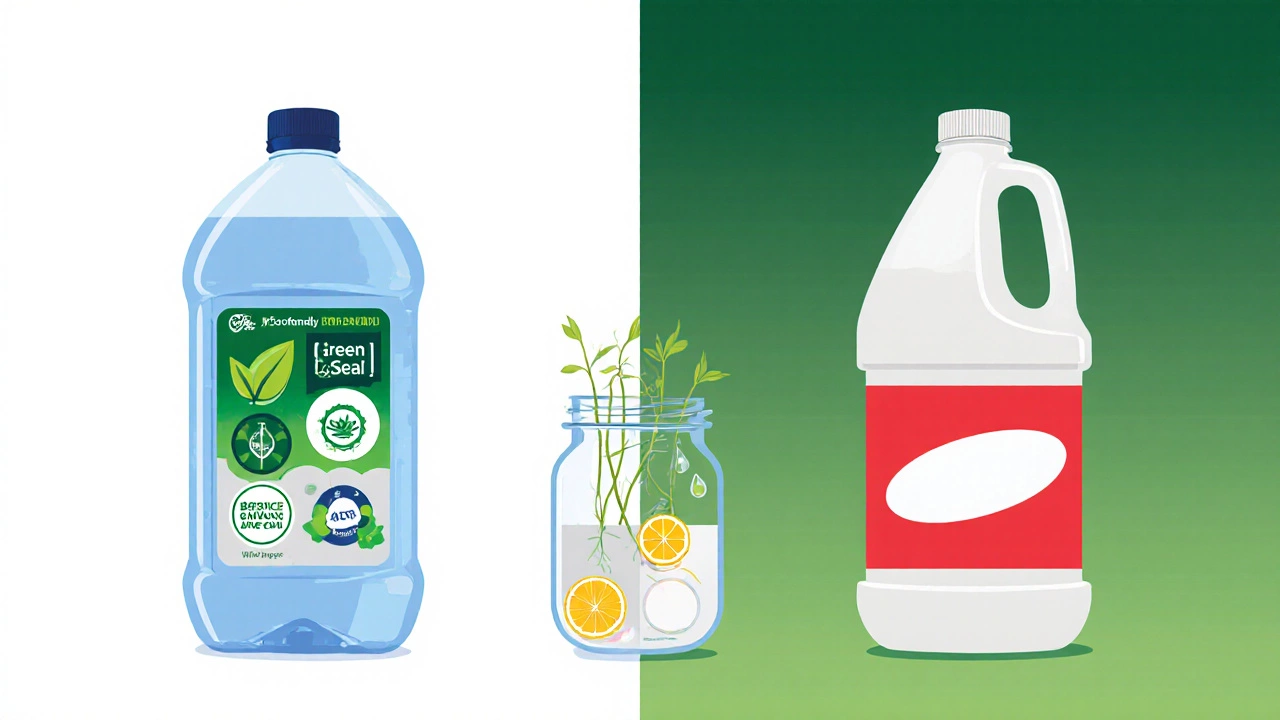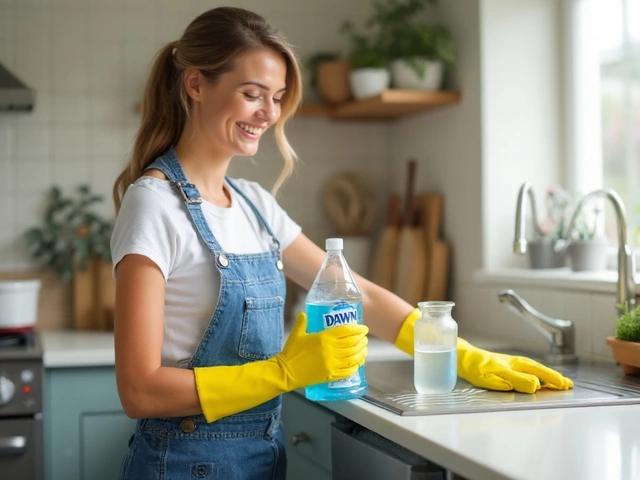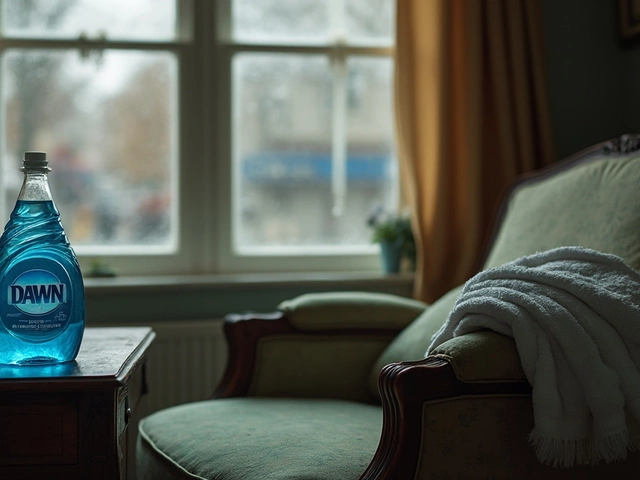Eco-Clean Check: Green Product Assessment
Check Your Cleaning Product
Enter product details to verify if it meets eco-friendly standards based on article criteria
Eco-Friendly Assessment
Consider this product if you're prioritizing plant-based ingredients. However, the VOC level exceeds recommended limits.
When you pick a eco‑friendly cleaning product a cleaning solution designed to minimize environmental impact while delivering effective results, you’re looking for more than just a pleasant scent. If you’re hunting for an eco-friendly cleaning product, start here.
Core Ingredients That Make a Product Green
Understanding the chemistry helps you spot the good from the bad. Below are the most common eco‑focused ingredient categories.
- biodegradable surfactant a surface‑active agent that breaks down naturally in water within weeks, avoiding long‑lasting aquatic toxicity. Examples include alkyl polyglucoside derived from corn starch.
- plant‑based solvent a liquid that dissolves grease and grime, sourced from renewable crops like citrus or soy. These replace petroleum‑based solvents such as glycol ethers.
- phosphate‑free formula avoids phosphates that cause eutrophication in rivers and lakes, a major driver of algal blooms.
- low VOC (volatile organic compounds) limits emissions that contribute to indoor air pollution and smog formation. Look for products under 50 g L⁻¹.
- Natural fragrance or scent‑free options that use essential oils sparingly, reducing synthetic perfume allergens.
- Absence of chlorine bleach, ammonia, and synthetic dyes, which persist in the environment and can harm aquatic life.
Packaging Matters as Much as the Formula
Even a perfectly green formula can lose points if it’s wrapped in wasteful packaging. Key packaging attributes to watch:
- recycled packaging containers made from post‑consumer plastics or aluminum, often indicated by a recycle triangle with a percentage. Aim for 50 %+ recycled content. \n
- Refill stations or concentrate pods that cut down on plastic volume.
- Biodegradable or compostable sachets made from plant‑based polymers.
- Clear labeling about disposal and recycling instructions.
Manufacturing Footprint: Energy & Lifecycle
Green credentials extend beyond the shelf. Manufacturers that power factories with renewable energy, employ water‑recycling processes, and conduct a full Life‑Cycle Assessment (LCA) earn higher trust scores. When a brand shares LCA data-showing carbon emissions per kilogram of product-you can compare its true impact against conventional competitors.
Third‑Party Certifications: Quick Trust Signals
Certifications act as independent verification of green claims. The most recognized ones include:
- EU Ecolabel a European Union label that evaluates entire product life‑cycle, from raw material sourcing to disposal. Products must meet strict criteria on toxicity, biodegradability, and packaging.
- Green Seal (U.S.), which focuses on indoor air quality and reduced environmental impact.
- Cradle to Cradle Certified, addressing material health, reuse potential, and renewable energy use.
- USDA BioPreferred, indicating ingredients derived from USDA‑certified renewable resources.
Look for the logo on the label or the brand’s website; it’s a shortcut to confidence.
Performance vs. Green: Myth‑Busting the Effectiveness Gap
Many shoppers worry that green means weak. In reality, modern surfactants and plant‑based solvents can match or exceed traditional chemicals. The key is using the right concentration. For example, a 5 % solution of an alkyl polyglucoside concentrate often cleans a kitchen stovetop as well as a 10 % solution of a petroleum‑based detergent.

Practical Tips for Choosing the Right Product
- Read the ingredient list first. Anything ending in “‑phosphate”, “‑chloride”, or “‑phthalate” is a red flag.
- Check for certifications like EU Ecolabel or Green Seal.
- Prefer refillable bottles or concentrate packs to reduce plastic waste.
- Look for transparent LCA or carbon‑footprint figures on the brand’s site.
- Test a small area if you’re switching cleaners; most eco‑formulas work at lower dilution rates, saving water too.
DIY Alternatives: When You Want Full Control
If you enjoy mixing your own solutions, stick to proven green ingredients:
- White vinegar (5 % acetic acid) for mineral deposits and glass shine.
- Baking soda (sodium bicarbonate) as a gentle abrasive for sinks and ovens.
- Castile soap (plant‑based) combined with a few drops of citrus essential oil for all‑purpose cleaners.
These DIY mixes score high on biodegradability, low VOC, and are cheap to make. Just remember to label your containers!
Common Pitfalls and How to Avoid Them
Even well‑meaning buyers can slip up. Watch for these traps:
- Green‑washing: Vague claims like “natural” without certification.
- Over‑packaging: Small bottles wrapped in extra plastic.
- Hidden additives: “Fragrance” that actually contains petro‑derived compounds.
- Inadequate dilution: Using concentrate at full strength wastes product and may increase environmental load.
Cross‑check the full ingredient list against reputable green ingredient guides to stay safe.
Quick Comparison: Eco‑Friendly vs. Conventional Cleaners
| Aspect | Eco‑Friendly | Conventional |
|---|---|---|
| Primary surfactant | Biodegradable (e.g., alkyl polyglucoside) | Synthetic (e.g., SLS, petroleum‑based) |
| Phosphate content | None | Often present for limescale control |
| VOC level | Low (< 50 g L⁻¹) | High, especially in spray cleaners |
| Packaging | Recycled, refillable, or biodegradable | d>Single‑use plastic|
| Certifications | EU Ecolabel, Green Seal, etc. | Rarely any third‑party label |
| Performance | Comparable when used at recommended dilution | Often marketed as “extra‑strength” |
Next Steps for the Conscious Cleaner
Now that you know what to look for, put the checklist into action:
- Visit your local eco‑store or supermarket aisle for certified labels.
- Swap out old bleach‑based products for a plant‑based all‑purpose spray.
- Set up a refill station at home using bulk concentrate containers.
- Share your findings with friends; word‑of‑mouth spreads green practices fast.

Is a product labeled “natural” automatically eco‑friendly?
Not always. “Natural” can still hide synthetic fragrances, phosphates, or high VOCs. Look for third‑party certifications like EU Ecolabel to confirm genuine environmental performance.
Can I mix my own eco‑friendly cleaner safely?
Yes. Simple recipes-vinegar plus water for glass, baking soda for scrubbing, castile soap with citrus oil for surfaces-are proven biodegradable and safe for most home uses. Always label containers and keep them out of children’s reach.
Do eco‑friendly products work on tough grease?
Modern plant‑based solvents and biodegradable surfactants are highly effective, especially when used at the recommended concentration. For stubborn stove‑top grime, let the solution sit a few minutes before wiping.
What does “low VOC” mean for indoor air?
VOC stands for volatile organic compounds. Low VOC cleaners release fewer airborne chemicals, reducing irritation and improving indoor air quality, especially important for households with kids or pets.
How can I tell if a product’s packaging is truly recycled?
Look for a recycling symbol with a percentage (e.g., 50 % rPET) or a label stating “made from post‑consumer recycled material.” Brands that publish sourcing data add extra credibility.




